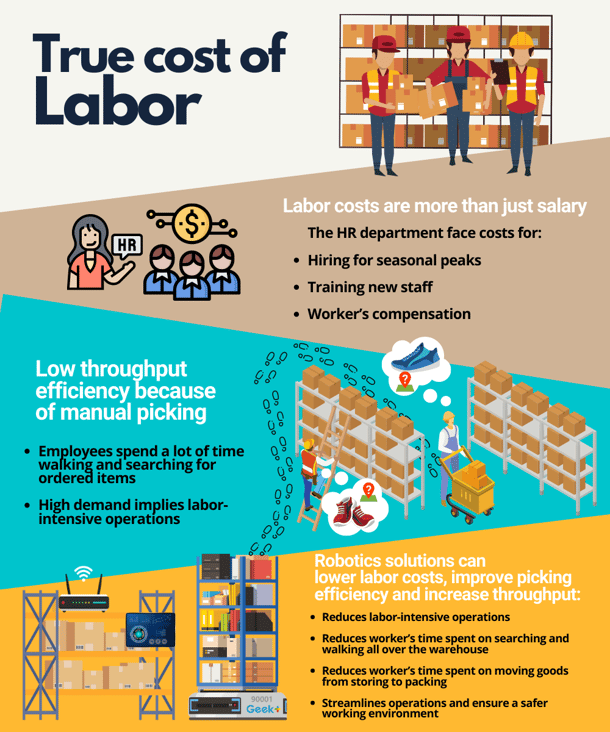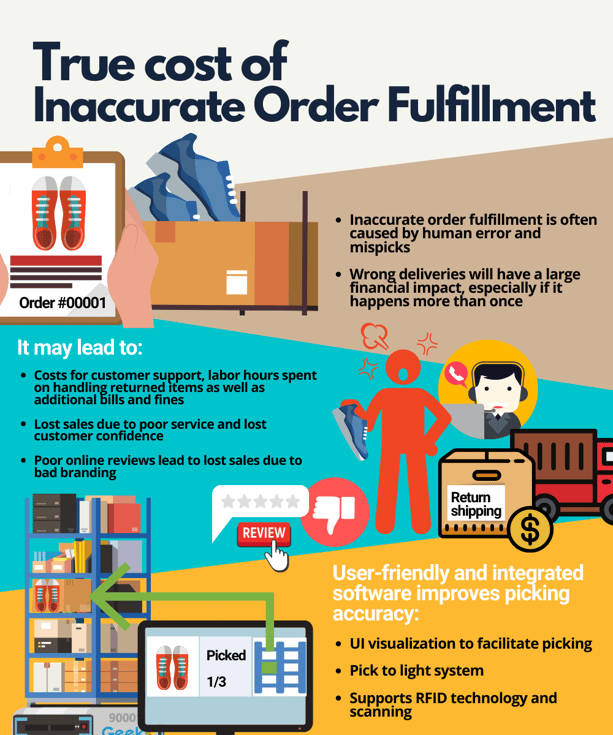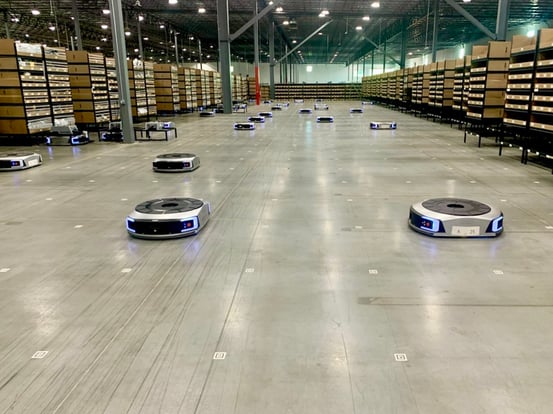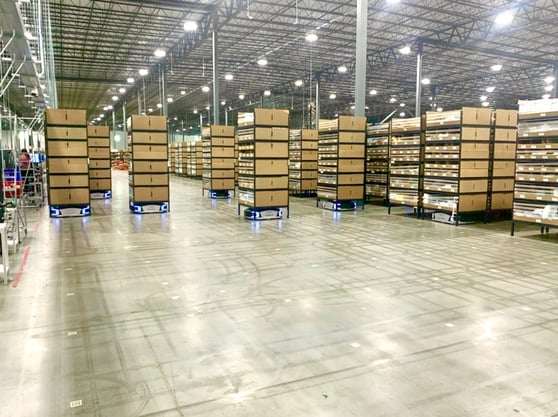Understanding the costs associated with warehousing is a matter of understanding processes and space, which boils down to labor and equipment. But in today’s supply chain landscape, the true cost cannot just be narrowed down to price or salary. It is a matter of understanding risks and the ability of your warehouse to cope with peak, high customer expectations and labor shortages.
According to a 2019 McKinsey Article, worldwide warehousing operation costs amount to about 300 billion euros a year, a number that is expected to continue to grow as the global supply chain become increasingly complex and warehousing operations more difficult to control. This implies the need for not only increased visibility and control but a long-term perspective.

Labor Shortages & High Wages
Labor in terms of wages is often mentioned as the biggest cost associated with warehouse operations. Furthermore, due to ongoing scarcity of labor and difficulties retaining workforce, these costs are expected to continue grow. According to the “Warehouse and Distribution Center (DC) Operations Survey” done by SCMR, labor shortages were the overriding challenge of warehouse operation managers in 2019. In the same survey, 54% stated that one of the methods for strengthening workforces was higher pay. Additionally, in a Warehouse Employee Opinion Survey made by EmployBridge and Prologistix in 2018, pay, followed by job security, was ranked the most important factor for warehouse workers.
Labor Safety & High Turnover Rates
While wages are often mentioned as the biggest cost associated with labor, it’s far from the only one. High turnover rates imply large costs in terms of recruitment, hiring, and training of employees. In an industry survey conducted in 2017, 61% of respondents had a warehouse employee turnover rate greater than 10%, with big impacts on productivity and the cost of replacing workers. While some see high turnover rates as a result of a tight labor market and workers sensitive to changes in wages, others point to health and safety risks as a result of increasingly high productivity standards brought on by e-commerce. Regardless, high turnover rates are one of the factors driving today’s warehousing costs.
Fluctuating Demand & Preparing for Peak
With an already difficult outlook in terms of labor shortages, hiring temporary employees to cope with peak periods is difficult. Although temporary hires may have been a strategy for handling periods of increased demand in the past, unpredictable demand in combination with the challenging task of hiring and training employees for periods of high throughput requirements, is making it a costly and time-consuming activity. While some companies might avoid this by paying regular staff for overtime it may also imply costs in terms of higher salaries and potential injuries due to overworked employees.
High Customer Demands & Human Error
Apart from high throughput requirements, the accelerated shift to online sales has also led to higher customer expectations for fast and accurate deliveries, especially within the retail industry. This implies risky as well as stressful scenarios as higher demands for throughput and accuracy must be met by a workforce subject to labor shortages and high turnover rates. According to a survey conducted by DC Velocity in 2019, actors within wholesale/distribution, 3PLs, manufacturing and retail ranked order-picking accuracy as the most important metric for measuring performance. The survey also suggested the amplified focus on order-picking to be a result of picking mistakes taking on great importance when orders consist of single items, common for e-commerce. Human errors leading to inaccurate order fulfillment imply expensive scenarios such as lower sales as a result of poor service and customer confidence loss, and higher costs with time spent handling returned items, as well as potential bills or fines associated with it.
The Solution
By combining AI-driven Autonomous Mobile Robots and intelligent software, Geek+ Goods-to-Person and Bin-to-Person solution simplifies warehouse operations and reduces many of the time-consuming and physically difficult tasks of manual pickers, bringing a tripled picking efficiency and 99.99% accuracy, compliant with labor safety requirements. By reducing the overall reliance on employees, the solutions lead to lower labor costs and provide technology that can help warehouses become more resilient to flexibly meet fluctuations in demand and manage peak.
In recent years, there's been a rapid increase in overall deployment of AMRs as leaders across industries begin to understand how it can reduce immediate as well as future costs. With a growth of more than 300%, the number of robotics warehouses is expected to reach 50 000 in 2023. One of the companies who’s already taken the bold step and decided to upgrade its warehousing operations is Winit, an integrated supply chain solutions provider for cross-border e-commerce serving industry leaders like eBay.
Geek+ Help Streamline Winit’s Warehousing Operations
In 2020, Winit’s Cincinnati Fulfillment Center, faced many of the challenges commonly known to global e-commerce solutions providers today. If it initially was the prospect of being able to mitigate costs associated with labor shortages and high turnover rates that drove the company to consider automation, it was the ability of Geek+ solutions to cope with underlying growth and flexibly scale to manage unpredictable demand-cycles that became the key criteria for adopting Geek+ Goods-to-Person solution to its warehouse.

- - AI-driven AMRs bring inventory shelves and pallets to picking stations, which eliminates the time spent by employees walking up and down aisles before picking and selecting and intelligently organizes the warehouse inventory based on order analysis, leading to a 300% increase in picking efficiency and more accurate operations
- - The Geek+ system also helps the company mitigate against high turnover rates and labor shortages. By easily adjusting the number of robots as well as active work hours, Winit is now able to meet fluctuations in demand while also keeping a smaller but constant number of employees, simplifying management of operations
- - Lastly, the flexibility of the systems as well as easy and fast deployment of Geek+ solutions, allows Winit to flexibly scale its operations and realize a planned future expansion of its distribution center so as to meet underlying growth demands

Today, factors driving warehousing costs cannot be isolated from the future challenges facing the supply chain. Geek+ is dedicated to find solutions that, not only consider the most urgent problems facing the warehousing industry today, but help your company grow and flexibly meet the challenges of tomorrow.
